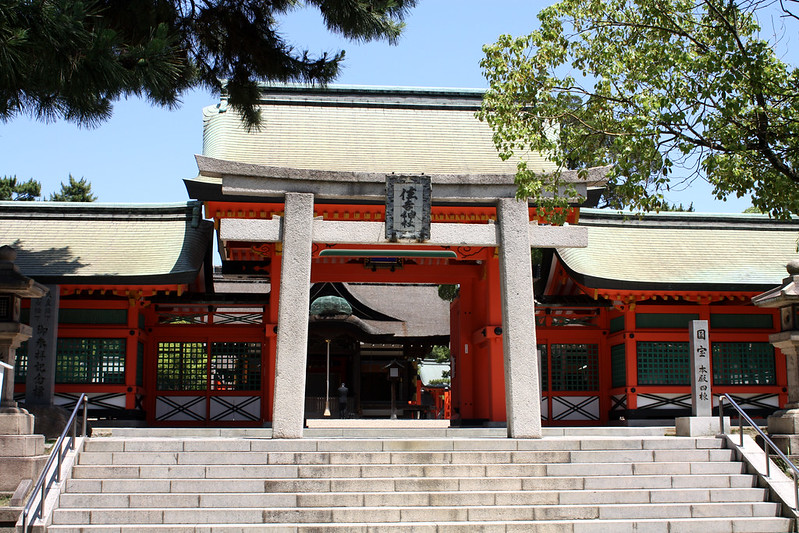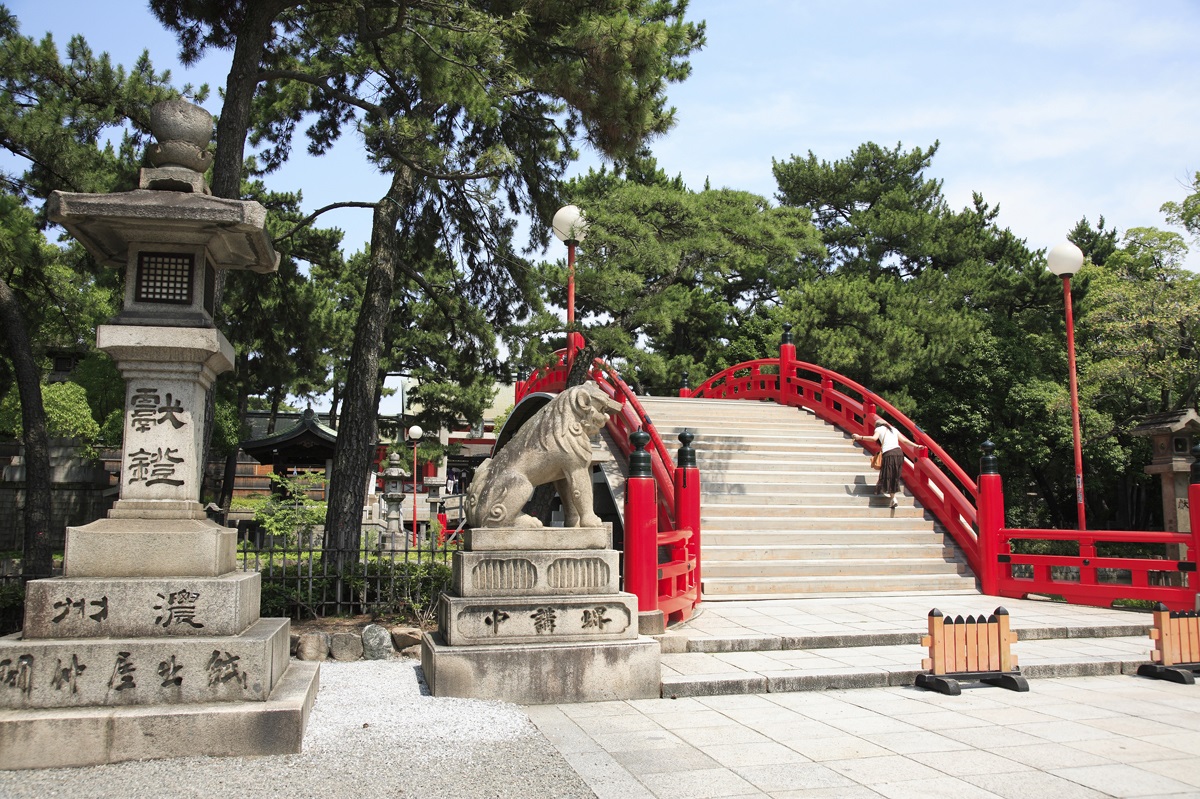


Sumiyoshi Taisha
Osaka's ancient guardian of the seas, travel, and poetry.
One of Japan's oldest shrines, Sumiyoshi Taisha in Osaka offers protection to sailors and travelers, and features a unique, purely Japanese style of architecture.
History of the Shrine
Founded in the 3rd century, before the introduction of Buddhism and its architectural influences, Sumiyoshi Taisha is one of the most important shrines for sea-related blessings in Japan. Its founding is described in the ancient 'Kojiki' chronicle. The Sumiyoshi kami were born when the creator god Izanagi was performing a purification ritual in the sea after returning from the underworld. As sea-born deities, they naturally became the guardians of sailors and fishermen.
Before land reclamation changed the coastline, the shrine directly faced the open sea. It was the last stop for Japanese imperial envoys, traders, and monks embarking on dangerous voyages to mainland Asia. They would pray here for divine protection and a safe return. The shrine's long history and its patronage by the imperial court and powerful families have cemented its status as a premier shrine of Japan.
The Enshrined Kami
The primary deities are the 'Sumiyoshi Sanjin', a trio of sea-born kami: Sokotsutsu no O-no-mikoto, Nakatsutsu no O-no-mikoto, and Uwatsutsu no O-no-mikoto. These three represent the kami of the seabed, the middle of the sea, and the sea's surface, respectively. Together, they govern all aspects of the ocean and provide protection for all who travel upon it.
They are also, intriguingly, considered patrons of 'Waka' poetry, linking the journey of a ship on the waves with the flowing composition of a poem. The fourth enshrined deity is Okinagatarashihime-no-mikoto, the deified name for the semi-legendary Empress Jingu, who is said to have founded the shrine after a successful military campaign overseas, in gratitude to the Sumiyoshi kami for her safe voyage.
What to See
The shrine is famous for its unique architectural style, known as 'Sumiyoshi-zukuri'. The main halls have straight roofs (as opposed to the curved roofs common in later, Chinese-influenced designs), forked finials on the roof ridge, and are painted in a vibrant vermilion. This style is considered one of the purest forms of native Japanese shrine architecture.
The most iconic feature for visitors is the beautiful and steeply arched 'Sorihashi Bridge', which spans a pond on the approach to the main hall. The high arch is said to resemble a rainbow. Crossing the bridge is believed to be a symbolic act of purification, cleansing the visitor of their sins and impurities before they meet the kami, making them worthy of receiving blessings.
Major Festivals
The 'Sumiyoshi Matsuri' in late July is one of Osaka's most important summer festivals. The highlight is a procession where the shrine's 'mikoshi' is carried from the shrine, through the streets, and to a designated spot where it undergoes a purification ritual. The 'Otaue Shinji' in June is a fascinating ancient rice-planting festival. Women in traditional attire plant rice seedlings in the shrine's sacred paddy field while traditional songs and dances are performed. This ritual has been designated an Important Intangible Folk Cultural Property and is a prayer for a rich harvest.
Support Sumiyoshi Taisha
Your participation helps preserve this sacred site for future generations. Every digital offering contributes to real shrine preservation efforts across Japan.
By making an offering, you become part of a global community honoring Japanese spiritual traditions and supporting the cultural heritage that has been cherished for centuries.